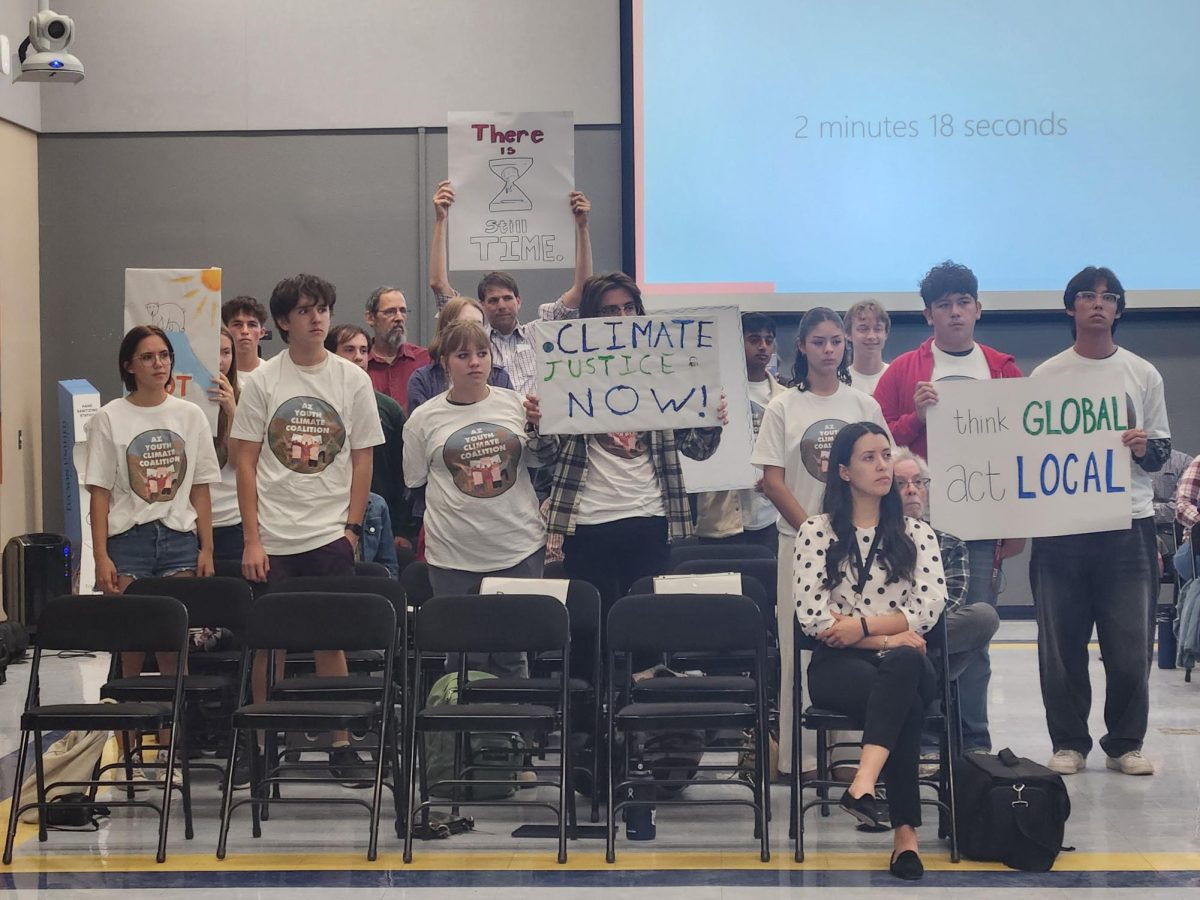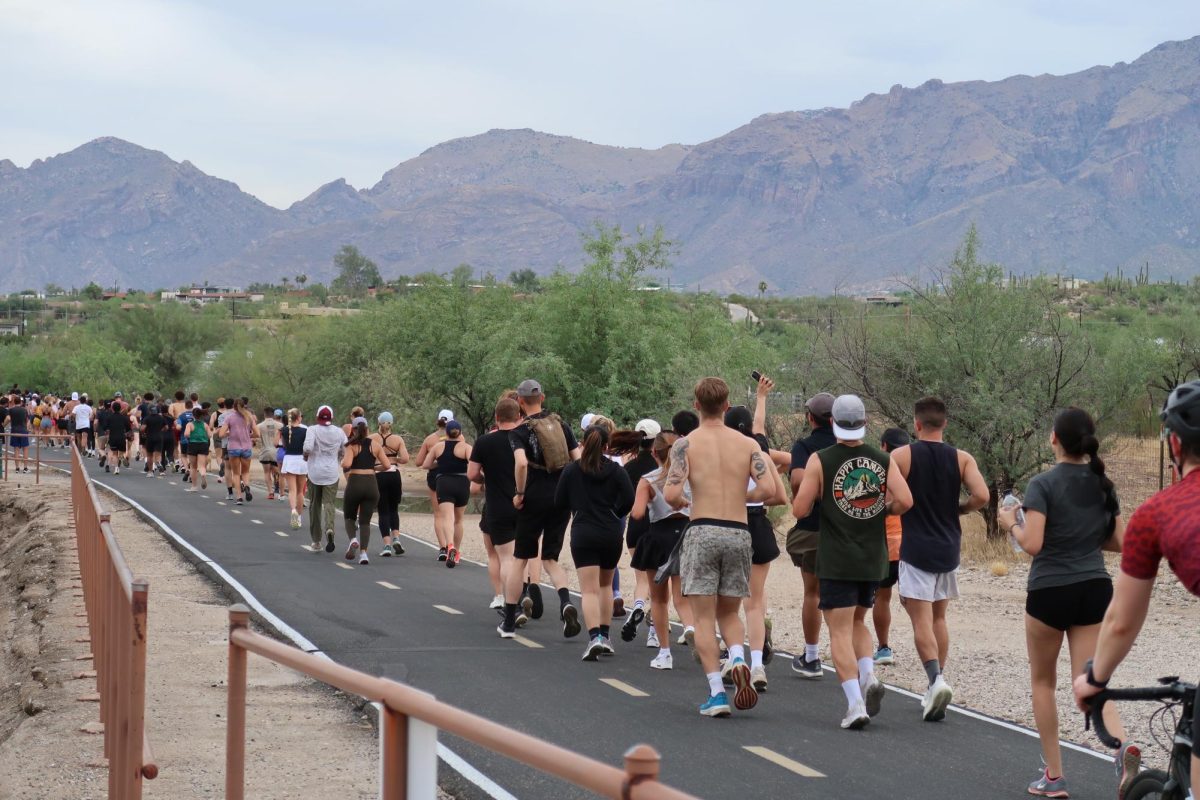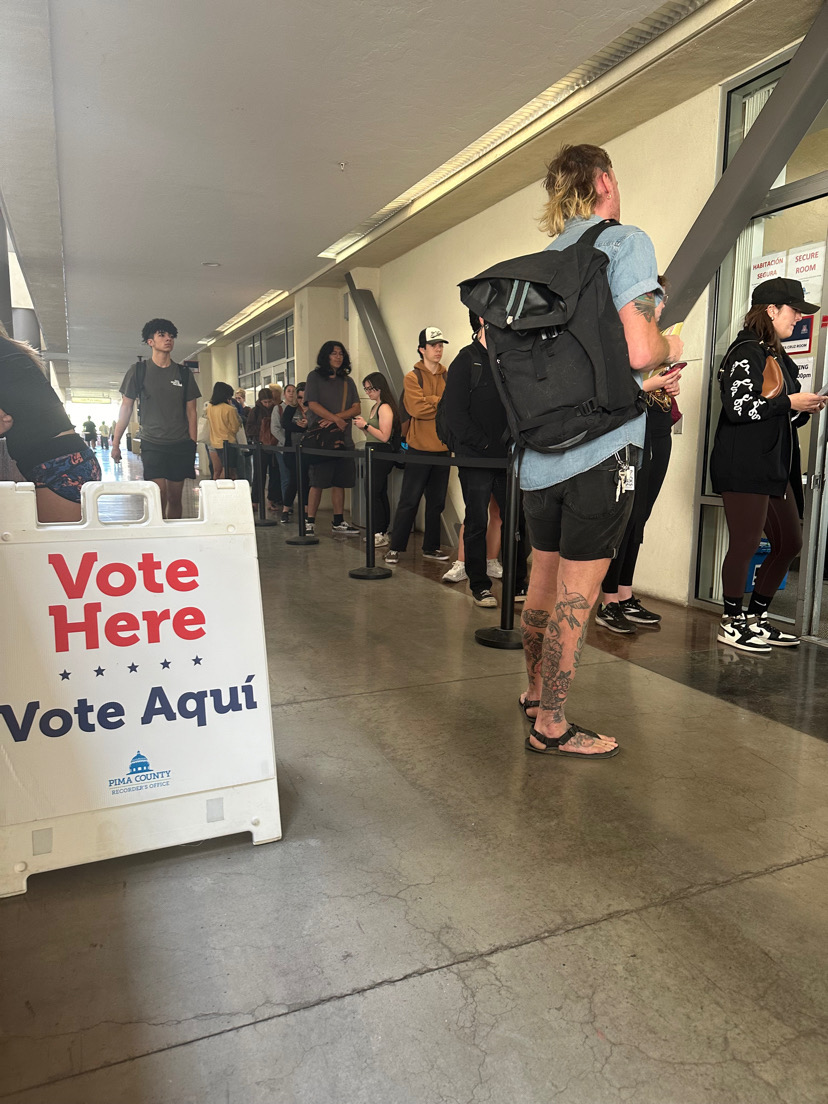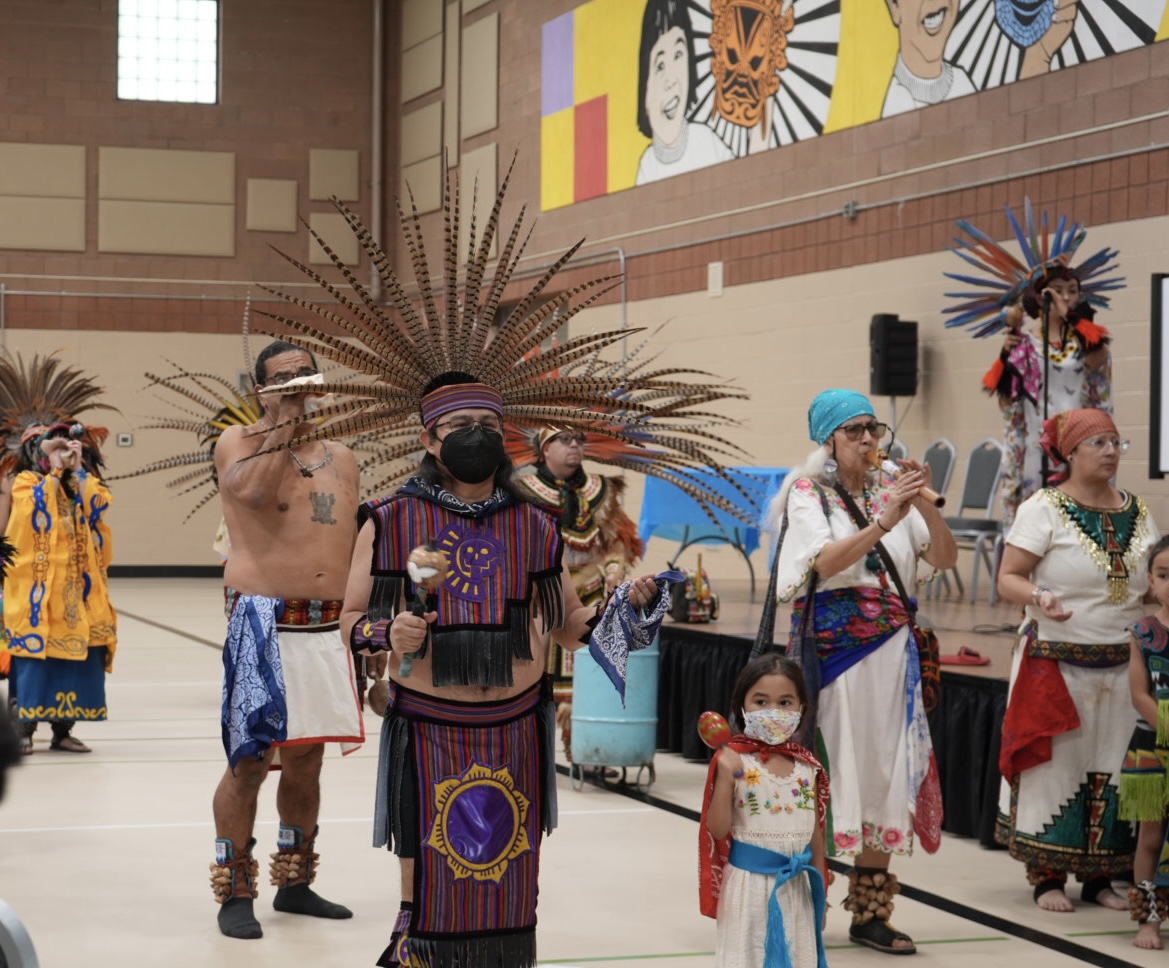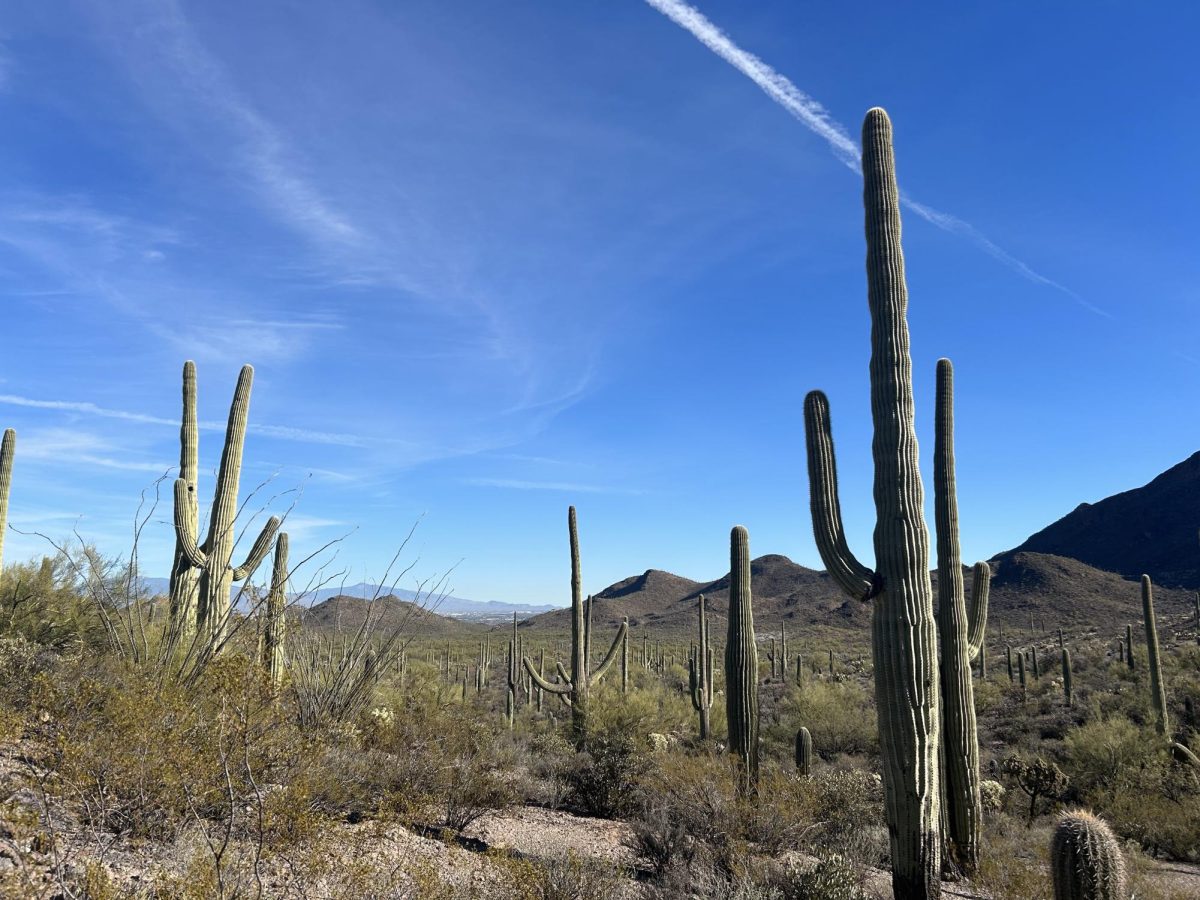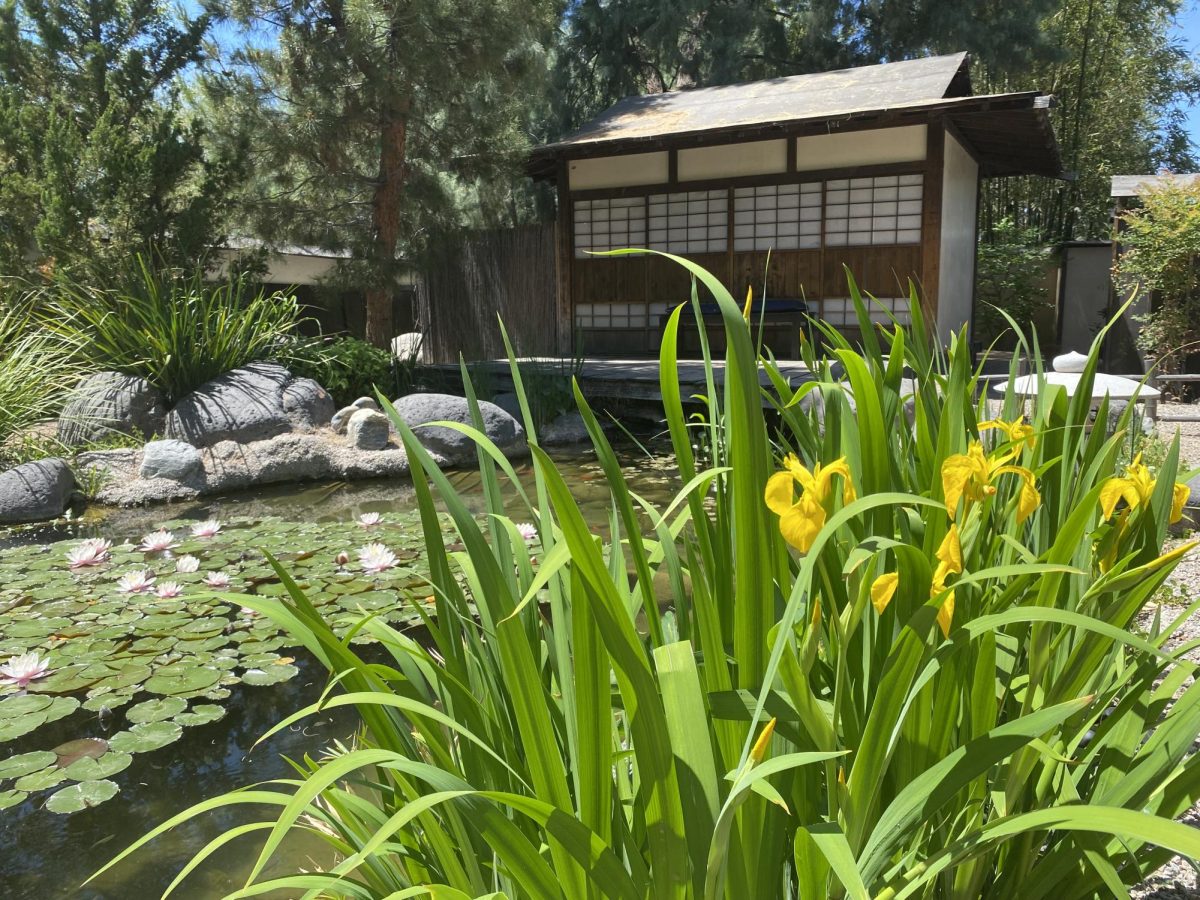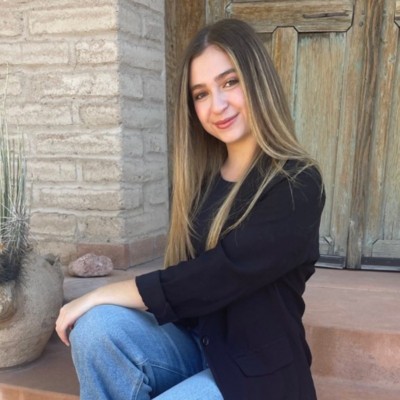Although our future president does not think climate change is real, Tucson students haven’t lost hope in standing up to protect the environment.
The student-led Arizona Youth Climate Coalition drafted a climate action resolution plan that calls for the Tucson Unified School District to cut its emissions in half by 2030 and reach net zero by 2040.
The TUSD Governing Board adopted the plan 3-2 at its meeting on Oct. 29, with TUSD board members Natalie Luna Rose, Jennifer Eckstrom and Ravi Shah supporting it while members Sadie Shaw and Val Romero opposed.
Part of those emissions cuts would come from switching to electric buses.
Shaw and Romero’s main concerns were related to the financial aspect – the plan is estimated to cost around $900 million, according to Tina Cook, energy project manager for TUSD, who collaborated with the students on the plan.
Cook said the plan could save the district around $4.7 million per year if fully implemented.
Board members said that not hiring a consultant was a red flag, especially since Cook could not confirm the plan would not exceed $900 million.
Additionally, Shaw was against switching to electric vehicles. When she brought up breaking the plan into parts and voting on everything separately, she could not get enough members to second her motion.
But Shaw’s motion to switch the word “commit” to “strive” to keep the board from being financially liable if they could not afford the plan did pass.
Shah had been working with the Arizona Youth Climate Coalition since the start of June 2023 to make their plan a reality.
“At TUSD, we are responsible for the education and growth of 40,000 kids throughout our community,” Shah said at the meeting. “By passing the policy tonight, we are laying the foundation for the next two decades and beyond – the work our district needs to do to limit our contribution to manmade climate change.”
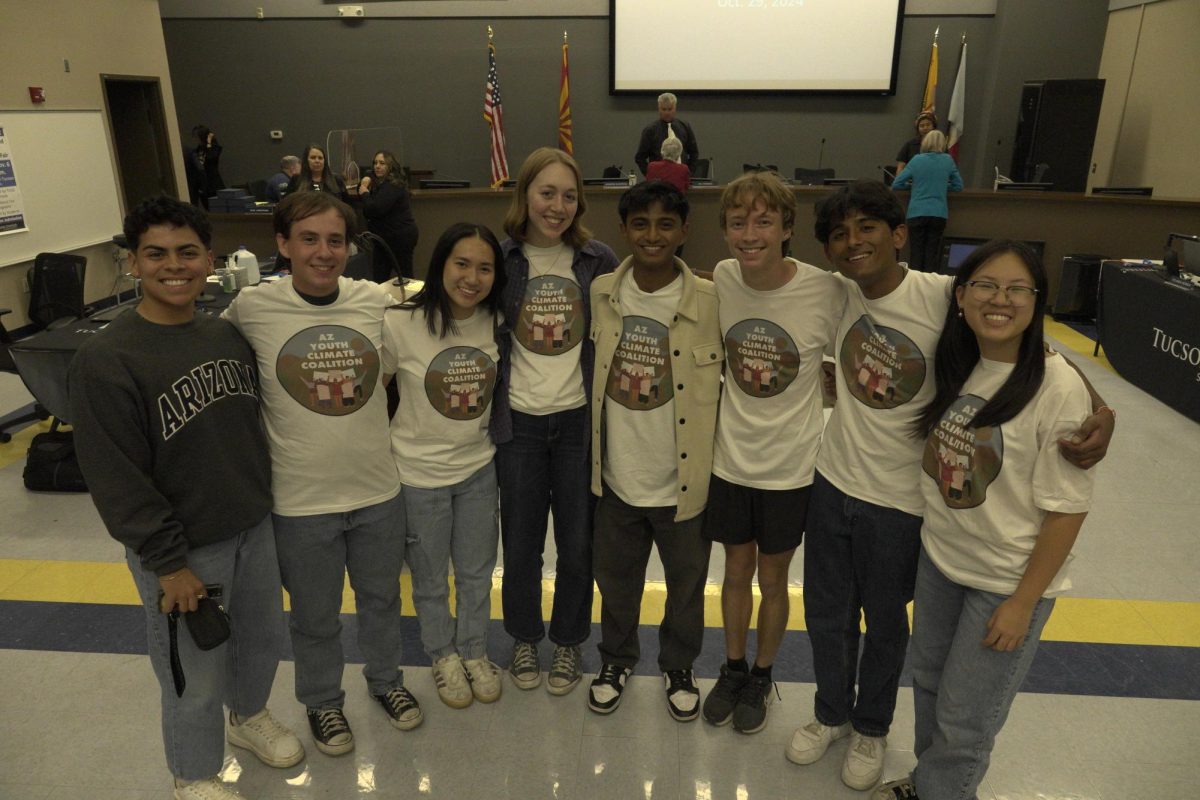
Arizona Youth Climate Coalition and UArizona Divest members celebrating the resolution passing.
Arizona Youth Climate Coalition and UArizona Divest members celebrating the resolution passing.
Arizona Youth Climate Coalition is a group of 11- to 22-year-olds fighting for climate justice across the Grand Canyon state. The resolution was written, researched and lobbied for by 13- to 20-year-olds.
Arizona Youth Climate Coalition has almost 90 members, with around 40 in the Tucson chapter; other chapters are in Phoenix, Tempe and Flagstaff.
Almost 20 students attended the October TUSD board meeting, which surprised Shah. He said he had never seen that many high school and college students show up to a board meeting and was happy that the youth cared so much about this issue.
University of Arizona computer science junior Ojas Sanghi, Co-Lead of the Tucson chapter of Arizona Youth Climate Coalition, played a vital role in its passing.
“For like the past year and a half, we have been working with the Tucson Unified School District, which is the city’s and Southern Arizona’s largest school district, to develop and pass a climate action resolution,” Sanghi said. “The resolution that (the coalition) has made is entirely student-researched, youth-researched and youth-written and it is, as it stands, the country’s most comprehensive school climate action resolution.”
A few months ago, the Arizona Youth Climate Coalition even met White House officials about their plan, according to Sanghi.
Tanish Doshi, a coalition member and senior at BASIS Oro Valley, said the plan could tackle students’ fears about the climate crisis.
“Arizona is a swing state on the front lines of the climate crisis,” Doshi told the board. “When a major school district like TUSD commits to bold action, people pay attention. Other states will look to us to see what’s possible. Young people will see that their voices matter. This resolution is a promise that you’re taking young people’s futures seriously.”
Emelia Kim, the coalition’s statewide policy director, described this resolution as a “financial investment” and “logical plan for the community.”
UA junior Eddie Barron, a member of the student-led UArizona Divest organization that encourages the university to divest from fossil fuels and switch to clean and sustainable energy sources, said that a more comprehensive climate curriculum like expanding outdoor learning through community gardens at schools would boost student engagement. That could lead to improvement in district test scores.
Arizona Youth Climate Coalition hopes this climate action resolution will set an example for other districts in Arizona and worldwide.
A decent portion of the funding to implement the plan will come from TUSD Proposition 496, a $480 million bond approved by voters last November that allocates funding towards school improvements like aging infrastructure, air conditioning, transportation and technology. Additional funds will be from Inflation Reduction Act grants, according to Sanghi.
Read the full TUSD plan here.
Arizona Sonoran News is a news service of the University of Arizona School of Journalism.



